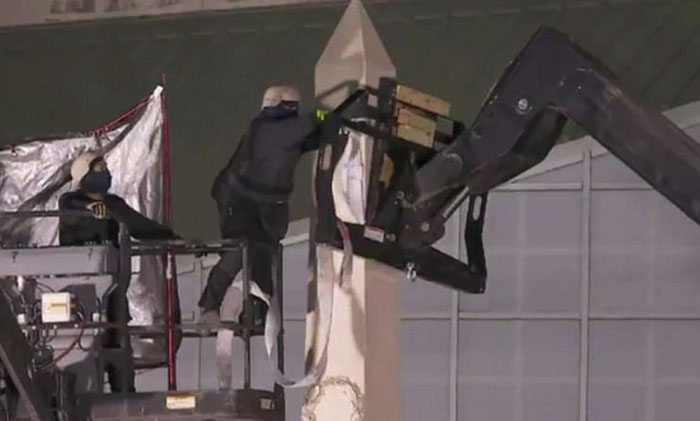In a dramatic lesson of the power of demographics determining destiny, the first of four Confederate monuments in New Orleans—the Liberty Monument, which paid tribute to vigilantes who sought to overthrow the city’s Reconstruction era government—was removed last week in the middle of the night.

In the coming weeks, three statues honoring Generals Robert E. Lee, P.G.T. Beauregard and Confederate President Jefferson Davis will also be removed.
Several other Southern cities have taken similar measures and/or began debating the removal of their Civil War monuments. In Richmond, Virginia residents have long called for the Monument Avenue to be cleared free of Confederate statues, but without success. Statues of Jefferson Davis and Robert E. Lee have been vandalized numerous, the latest during anti-Trump protests after the election.
Earlier this year, the Charlottesville, Virginia City council voted 3-2 to take away the statue of Robert E. Lee and rename Lee Park.
The Historical Marker Database lists more than 13,000 monuments and memorials across the county however it’s hard to know precisely how many of these pay tribute to Confederates. What is not in dispute, however, is that commemorations to the Secessionist cause can be found in every former Confederate state.
The overwhelming majority were installed following the collapse of Reconstruction
After the New Orleans City Council voted overwhelmingly to remove the city’s Confederate statues, the City spent nearly 18 months embroiled in costly litigation brought by three historical societies and the Sons of Confederate Veterans.
The planned removal—estimated to cost $600,000—only moved forward after the Fifth Circuit affirmed a lower court ruling and rejected their claims as lacking “legal viability or support.” Charlottesville’s government-approved removal carries a price tag of $400,000 and is also mired in a court battle with the Sons of Confederate Veterans.

Four states have made it impossible to remove or alter their historic structures, regardless of the desires of local municipalities. After a protracted fight to take down the Confederate flag from the state’s Capitol dome in 2000, South Carolina passed the Heritage Protection Act to prohibit the removal of Confederate monuments from public property. Georgia, Mississippi and Tennessee quickly followed suit.

If and when these structures are removed, what will become of them?
Charlottesville elected to sell and relocate its Confederate relics. New Orleans Mayor Landrieu said that the his city’s statutes will be stored and preserved until they can be displayed in a “more appropriate place.”
The real lesson of the statue removal effort is however the fact that it is taking place against the backdrop of a diminishing white population in all the affected areas: conclusive proof of the adage that “demography is destiny.”
European culture will not be preserved by non-Europeans—and until Europeans understand and accept this principle, along with the fact that they will have to be the majority population in areas they want to control, events such as last week’s will continue to be the norm.